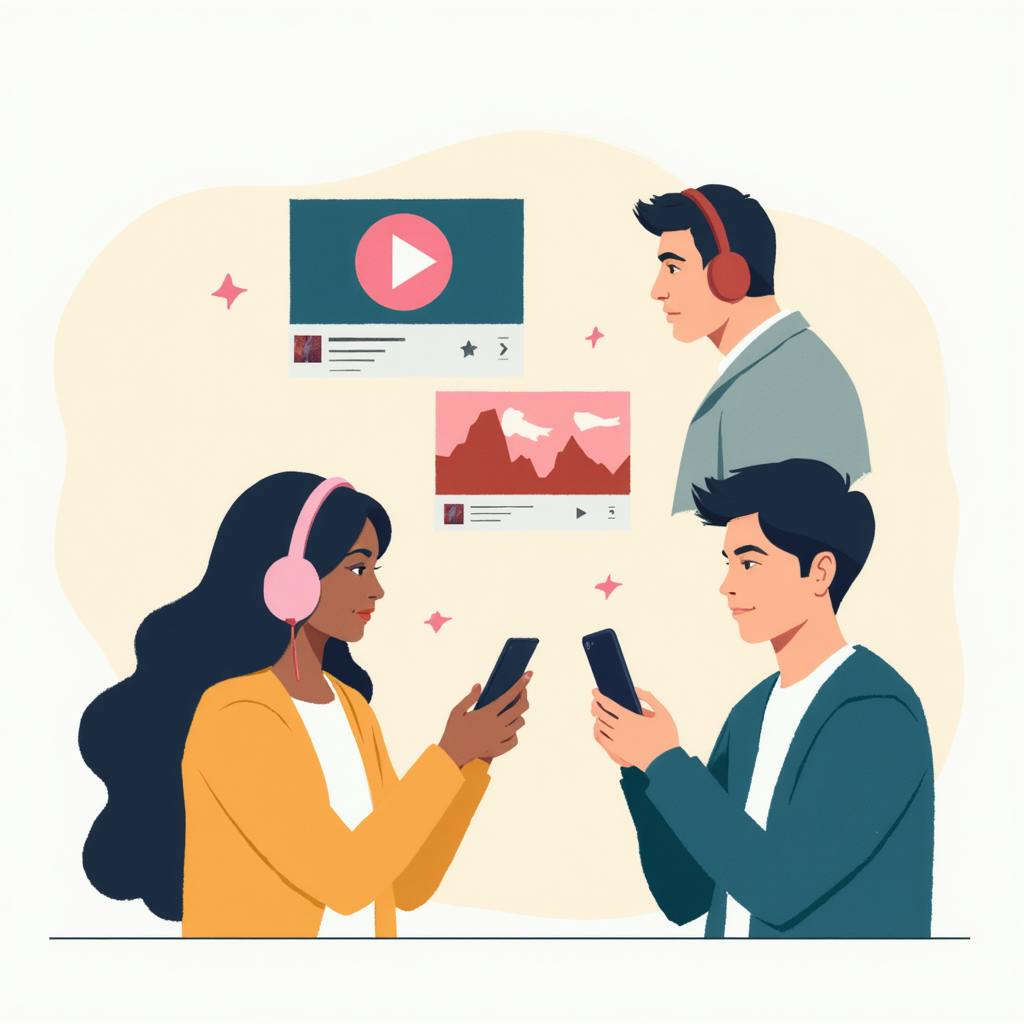In recent years, the design world has started to shift in a big way toward sustainability, and environmental typography has become a key part of that change. This creative design method brings together caring for the planet and strong visual messaging. It encourages designers to think about the environment in every decision they make when working with type. As the planet faces more serious environmental issues, this kind of design offers hope for a better, more sustainable future.
This article takes a close look at what environmental typography is and why it matters more and more in graphic design. It shows how this approach not only helps protect the environment but also shapes how people see brands and make choices. By mixing eco-friendly thinking with good design, environmental typography is helping set new, higher standards in the design industry.
Understanding Environmental Typography
Environmental typography in graphic design is the practice of creating typefaces and layouts that prioritize eco-consciousness. This means moving beyond conventional design practices to embrace those that are environmentally friendly. The process may involve using recycled materials, non-toxic inks, and local resources for print projects, as well as digital solutions that minimize energy consumption. As environmental concerns take precedence in the global industrial narrative, typography is no longer just about aesthetics—it's about aligning design with values that advocate for the planet.
To truly understand what environmental typography is all about, it helps to look at the main ideas behind it. First, it focuses on lowering the carbon footprint of design work. This can mean using recycled or eco-friendly materials to avoid harming the environment. Second, it supports the use of green printing methods that use less energy and create less waste. Finally, environmental typography aims to create designs that look great while also sharing messages about caring for the planet and making responsible choices.
The Core Elements of Environmental Typography
- Sustainable Materials: Environmental typography often incorporates materials that have a minimal environmental impact. Designers may choose recycled or FSC-certified paper and adopt alternative materials like biodegradable plastics for signage.
- Eco-Friendly Inks and Printing: The use of soy or vegetable-based inks significantly reduces the release of volatile organic compounds (VOCs) compared to petroleum-based inks. Additionally, digital printing offers superior accuracy with less waste.
- Energy-Saving Digital Design: Digital typography can also be sustainable. By optimizing fonts and graphics for online platforms, energy consumption is minimized—streamlining file sizes and reducing server energy use.
The key parts of environmental typography go further than just the basics. Designers today are trying out new materials like inks made from algae and packaging made from mushrooms. These materials are both eco-friendly and break down naturally, which helps reduce waste. Also, thanks to new digital tools, designers can now make interactive type-based displays that do not need paper or other physical materials at all. Even more, using virtual reality and augmented reality lets people have exciting and engaging design experiences without harming the environment like older methods might.

AI made with Casey McCallister
The Impact and Appeal of Environmentally-Conscious Typography
Embracing environmental typography doesn’t just benefit the planet; it also amplifies brand identity. Consumers are increasingly drawn to eco-aware companies, making sustainability a compelling brand differentiator. By integrating sustainable typography, designers help brands convey a message of responsibility and forward-thinking.
Environmentally-conscious typography does more than just make designs look good or help with marketing. It reflects a bigger change in what people care about. More and more, customers are thinking about the ethics behind what they buy. When brands use sustainable methods in their typography, they do more than catch the eye—they show they care about the same things their audience does. This helps build trust and stronger relationships. In many cases, using eco-friendly design can even push companies to make other parts of their business more sustainable too.
Evidence of Growing Trends and Practice
More and more companies and brands are choosing to go green, showing how much real-world impact environmental typography can have. Industry reports show that around 62% of consumers now expect businesses to take clear steps toward protecting the environment. Because of this, many graphic design companies are starting to offer eco-friendly services to show that they care and can help clients be more sustainable too.
This shift is showing up in big, well-known projects. For example, a famous tech company redesigned the signs at its main office using recycled aluminum and solar power. Another example is a global fashion brand that launched a campaign using packaging and ads made only from recycled materials. Each one features special type designs that tell the story of how the product supports a greener future. These efforts prove that environmental typography not only opens up creative design options but also clearly shows a brand’s dedication to sustainability.
FAQs about Environmental Typography in Graphic Design
How can typography be sustainable?
Typography can be sustainable through the use of recycled materials, environmentally friendly inks, and designing for digital mediums that require less energy for display and storage.
What are some examples of sustainable materials?
Sustainable materials may include recycled paper, biodegradable plastics, and materials that are sourced and processed with minimal environmental impact.
How does environmental typography impact brand perception?
Brands that adopt sustainable typography often experience enhanced perception among eco-conscious consumers, standing out as innovators in both design and environmental responsibility.
Environmental typography can also shape how people see a brand by matching the way a company looks with what it believes in. When a brand’s design shows its care for the environment, it sends a clear message that lines up with the values of customers who care about sustainability. This makes the brand feel more genuine and trustworthy. Because of this, companies that use environmental typography well often stand out from competitors and gain an edge in the market.
FAQ Article: Environmental Typography in Graphic Design
What is environmental typography in graphic design?
Environmental typography in graphic design goes beyond traditional print or digital formats by bringing type into real-world spaces like buildings, parks, and event venues. Designers use typography in these environments to help people navigate, communicate a brand’s identity, and enhance the overall theme or purpose of a space. By thoughtfully integrating type with its surroundings, environmental typography strengthens the connection between people and place, making experiences more meaningful, intuitive, and memorable.
This discipline blends typography with spatial design to shape how users interact with a physical environment. Common applications include wayfinding signage, architectural branding, public art installations, and themed designs in urban or natural settings. In a hospital, for example, clear signage can reduce confusion and stress by guiding visitors efficiently. In a park, playful or artistic lettering can transform basic instructions into engaging design elements. Ultimately, environmental typography improves both the aesthetics and functionality of spaces, reinforcing identity and enriching user experience.
How is sustainability embraced in the field of environmental typography graphic design?
Sustainability is a growing consideration in environmental typography as designers seek to minimize ecological impact while maximizing aesthetic and functional outcomes. Here are several ways sustainability is embraced in this field:
- Material Selection: Choosing sustainable materials, such as recycled metal, reclaimed wood, or biodegradable plastics, reduces environmental impact and supports eco-friendly practices.
- Energy Efficiency: Utilizing energy-efficient lighting for illuminated typographic installations, such as LED technology, reduces the carbon footprint and enhances the longevity of installations.
- Local Sourcing: Using locally sourced materials minimizes transportation emissions and supports local economies, aligning projects with the region’s sustainable initiatives.
- Durability and Flexibility: Designing for the long-term use of installations reduces waste, while modular designs allow for components to be reconfigured or repurposed as needs change.
- Digital Integration: Incorporating digital solutions like projection mapping can reduce the need for physical materials and allow for more dynamic, adaptable typographic displays.
Sustainability in design goes beyond aesthetics—it’s about making choices that support the planet. By using eco-friendly materials and methods, designers contribute to a growing demand for environmentally responsible solutions in areas like architecture and packaging. These thoughtful decisions help shape a future where sustainability is central to how things are created and used.
What are some examples of environmental typography in graphic design?
Several notable applications and projects exemplify environmental typography:
- Wayfinding Systems: Airports, museums, and hospitals often employ extensive wayfinding systems that rely on environmental typography. Clear, visually coherent signage guides visitors and enhances their navigational experience.
- Urban Installations: Projects like public art installations or urban murals incorporate typographic elements to engage and inform the public. Examples include the typographic benches or subway station designs that contribute to public awareness and aesthetic appeal.
- Commercial Spaces: Retail environments utilize environmental typography in branded spaces, enhancing customer engagement through thematic and immersive design. Examples include flagship stores or showrooms where typography reflects brand identity.
- Hospitality and Event Spaces: Typography in hotels, resorts, and event spaces often integrates seamlessly with interior design to provide information, establish ambiance, and reinforce brand ethos.
These examples highlight the flexibility and impact of environmental typography. In busy places like airports, it guides people efficiently, while in stores, it enhances brand perception and creates memorable experiences. When used thoughtfully, typography does more than convey information—it transforms how people interact with a space.

AI made with Casey McCallister
How has environmental typography in graphic design evolved over the years?
Environmental typography has undergone significant evolution, influenced by technological advancements, changing aesthetic preferences, and a heightened awareness of sustainability:
- Technological Advances: The introduction of digital design tools and software has allowed for more intricate, precise, and scalable typographic designs. Projection mapping and digital displays offer interactive and dynamic typography options.
- Aesthetic Shifts: Design trends have shifted from rigid, utilitarian signage to more creative and immersive typographic expressions. This reflects broader trends in graphic design, emphasizing individuality, and artistic integration.
- Sustainability Influence: Increased recognition of environmental responsibility has shifted the materials and methodologies used in environmental typography. Designers now prioritize green materials and processes in their projects.
- Adaptation to Space and Context: Modern environmental typography adapts to diverse spaces, from digital landscapes to urban settings. The flexibility and customization of design elements have become essential to meeting varied client and audience needs.
- Integration with Branding: Environmental typography today is deeply integrated with branding, ensuring consistent messaging across physical and digital touchpoints, and enhancing brand storytelling within spaces.
The rise of environmental typography reflects society’s shift toward greater environmental awareness and rapid technological advancement. Designers are exploring new ways to blend these forces, creating work that is both innovative and sustainable. As this field evolves, environmental typography will play a key role in shaping how we communicate through design in the future.
Conclusion: The Future of Design with Environmental Typography
Environmental typography in graphic design represents a harmonious blend of aesthetics and responsibility. As we look to the future, sustainable design practices will likely continue to evolve, offering fresh challenges and opportunities for designers.
Through the careful selection of materials, processes, and digital optimization, graphic designers can further engrain sustainability into their work, setting a benchmark for eco-conscious innovation. As it becomes increasingly pivotal, environmental typography not only enhances visual communication but also reinforces a brand’s commitment to our planet, proving yet again that design has the power to inspire change.
In the coming years, the integration of advanced technologies and sustainable practices will redefine the landscape of graphic design. As designers, brands, and consumers increasingly prioritize sustainability, environmental typography will continue to lead the charge toward a more responsible and innovative future. This evolution will not only transform design practices but also contribute to a more sustainable world, demonstrating the profound impact that conscientious design can have on our collective future.

